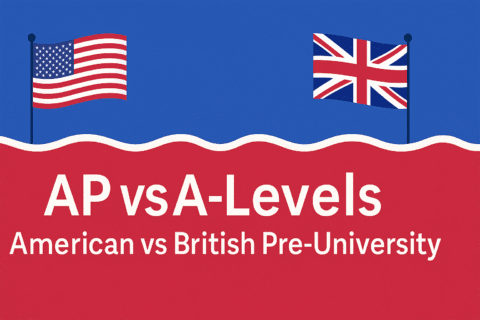How Many AP Classes Should I Take? A Real Talk Guide for Ambitious Students
Let’s be honest—this question has haunted every ambitious high school student at some point. You’ve probably asked yourself (or Google):
“How many AP classes is enough to get into a good college?”
“Am I taking too many?”
“What if I burn out before senior year?”
You’re not alone. As someone who’s helped hundreds of students craft smart academic paths—and survived the AP gauntlet myself—I can tell you: the answer isn’t one-size-fits-all.
So if you’re looking for a number, we’ll get there. But more importantly, we’ll give you the why, how, and what actually matters to admissions officers.
Let’s break it all down.
🧠 Chapter 1: What Even Are AP Classes?
Quick refresher: AP (Advanced Placement) classes are college-level courses offered in high school. They’re designed to be rigorous, fast-paced, and culminate in an exam. Score well on that exam, and you may earn college credit or placement advantages.
But beyond credit, APs show colleges:
You’re challenging yourself
You can handle academic pressure
You’re serious about your education
That said, piling on APs just for the flex? Big mistake. Let’s get strategic.
🎯 Chapter 2: What’s Your Goal?
Before you count APs like trophies, ask yourself:
Are you aiming for Ivy League or top 20 colleges?
Are you planning to apply to competitive STEM majors?
Do you want to graduate early from college or double major?
Do you care about GPA rank or valedictorian honors?
Your answers shape your ideal AP load.
📊 Chapter 3: What Top Colleges Actually Want
Elite colleges don’t have a magic number. What they do want:
Rigor relative to your school: Did you take the hardest courses available to you?
Balance: Did you avoid burning out while still showing challenge?
Performance: Did you excel in the APs you took, or scrape by with 3s and Bs?
Real Talk: It’s better to take 4 APs and get A’s than take 8 and barely survive.
📚 Chapter 4: A Realistic AP Course Load—By Tier
🟢 Good (Balanced)
3–5 APs total by graduation
One AP sophomore year
Two junior year
One or two senior year
Recommended for: solid state schools, liberal arts colleges, balanced lifestyle
🟡 Competitive
6–8 APs total by graduation
One AP in 10th grade
Three in 11th grade
Two or three in 12th grade
Recommended for: competitive majors, strong public flagships (e.g., UC system, UT Austin)
🔴 Ambitious (Top-Tier/Ivies)
8–12 APs total
Possibly 1 in 9th (e.g., AP Human Geo)
3–4 in 10th
4–5 in 11th (the heaviest year)
3–4 in 12th
Recommended for: top 10 colleges, competitive STEM/pre-med paths, valedictorian track
But—and I can’t stress this enough—only if you can handle it.
🧮 Chapter 5: The GPA Factor (And Weighted Madness)
Many schools use weighted GPAs where AP classes add extra “points” for difficulty. This can boost class rank—but it can also become a trap.
Taking AP Chem, AP Calc, and AP Lang all in one year? Sure, your GPA might hit 4.6—but at what cost?
Mental health matters.
One student I worked with dropped from 5 APs to 3 senior year. They were happier and more productive—and still got into Johns Hopkins.
⚖️ Chapter 6: The Law of Diminishing Returns
Let’s be real: the 10th AP class doesn’t impress like the 4th or 5th.
Colleges would rather see:
Depth (e.g., AP Bio + AP Chem + science research)
Passion (e.g., AP Art History because you love museums)
Consistency (doing well year over year)
Taking AP Music Theory and AP Physics C because you love both? That’s a story. Taking AP Music Theory just to “look good”? Not so much.
🧰 Chapter 7: Customizing Based on Major
🎓 Want Engineering?
AP Calc BC
AP Physics C
AP Computer Science A
AP Chemistry
🧠 Pre-Med?
AP Biology
AP Chemistry
AP Psychology
AP Calc or Stats
📈 Business/Econ?
AP Econ (Micro & Macro)
AP Stats
AP Calculus
AP Lang for writing
📝 Humanities?
AP Lang & AP Lit
AP U.S. History / World / Euro
AP Gov / AP Psych
AP Language (Spanish, French, etc.)
You don’t need all the APs—just the ones that align with your goals.
🧩 Chapter 8: What If My School Doesn’t Offer Many APs?
Great question. Colleges evaluate you in context.
If your school only offers 4 APs, and you took 3—you’re golden. If your school offers 20, but you only took 2—that’s trickier.
Workarounds:
Take community college or dual enrollment courses
Self-study an AP exam you’re passionate about
Show depth with extracurriculars, internships, or competitions
Remember: rigor is about intent, not just access.
✨ Chapter 9: Final Tips From the Trenches
Quality > quantity: Depth in a few APs beats surface-level struggle across many
Balance matters: Colleges love challenge—but also maturity and time management
Choose what fits you: Take APs in what genuinely excites or challenges you
Ask for help: Counselors, teachers, older students—they’ve been there
✅ Final Verdict: So… How Many APs Should You Take?
Take the number of AP classes that:
You can handle without sacrificing your health
Align with your academic interests and goals
Show challenge and growth, not perfection or burnout
Whether that’s 4 or 12—you’re not just building a transcript. You’re building your story.
And colleges? They want to read something real.

